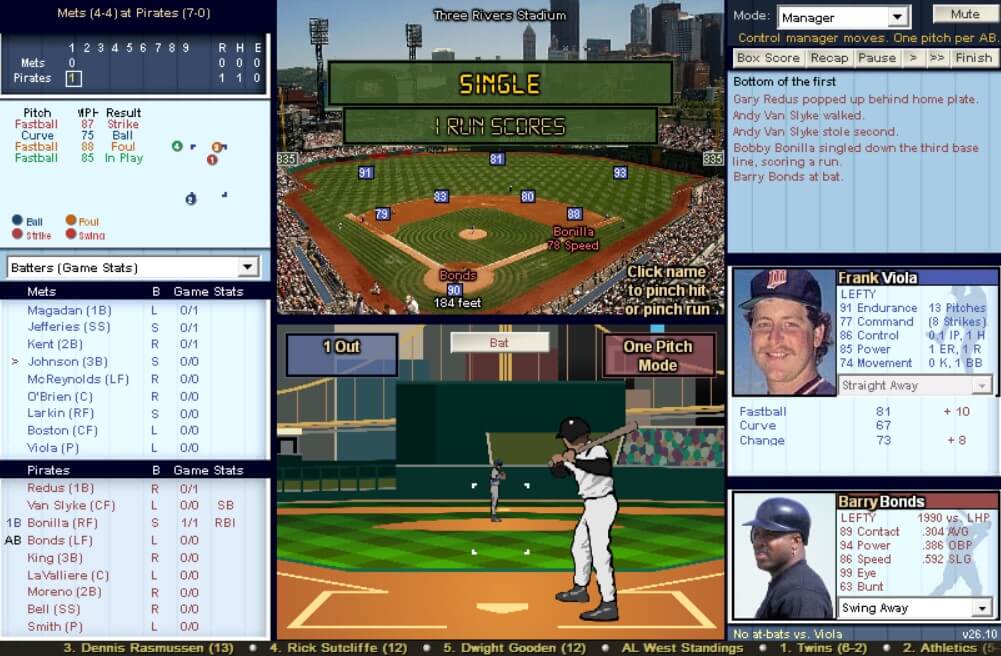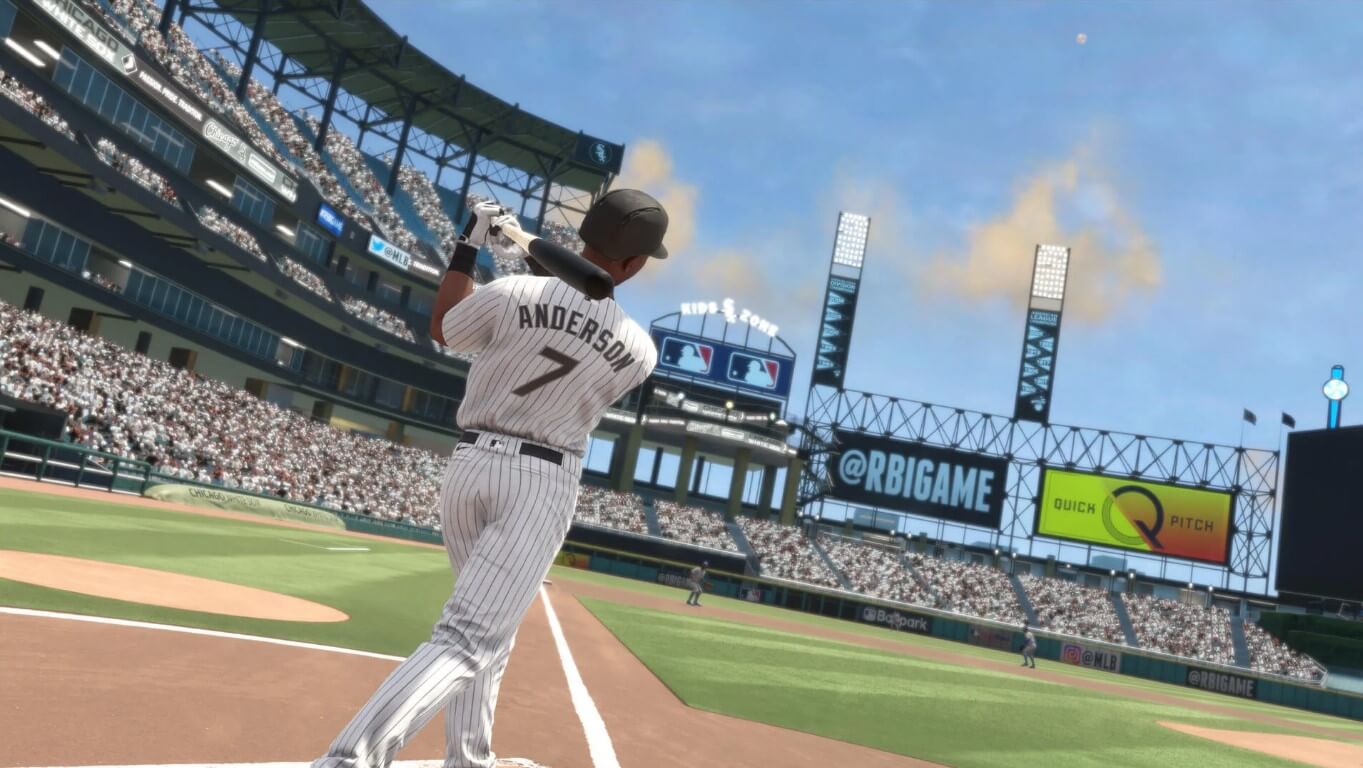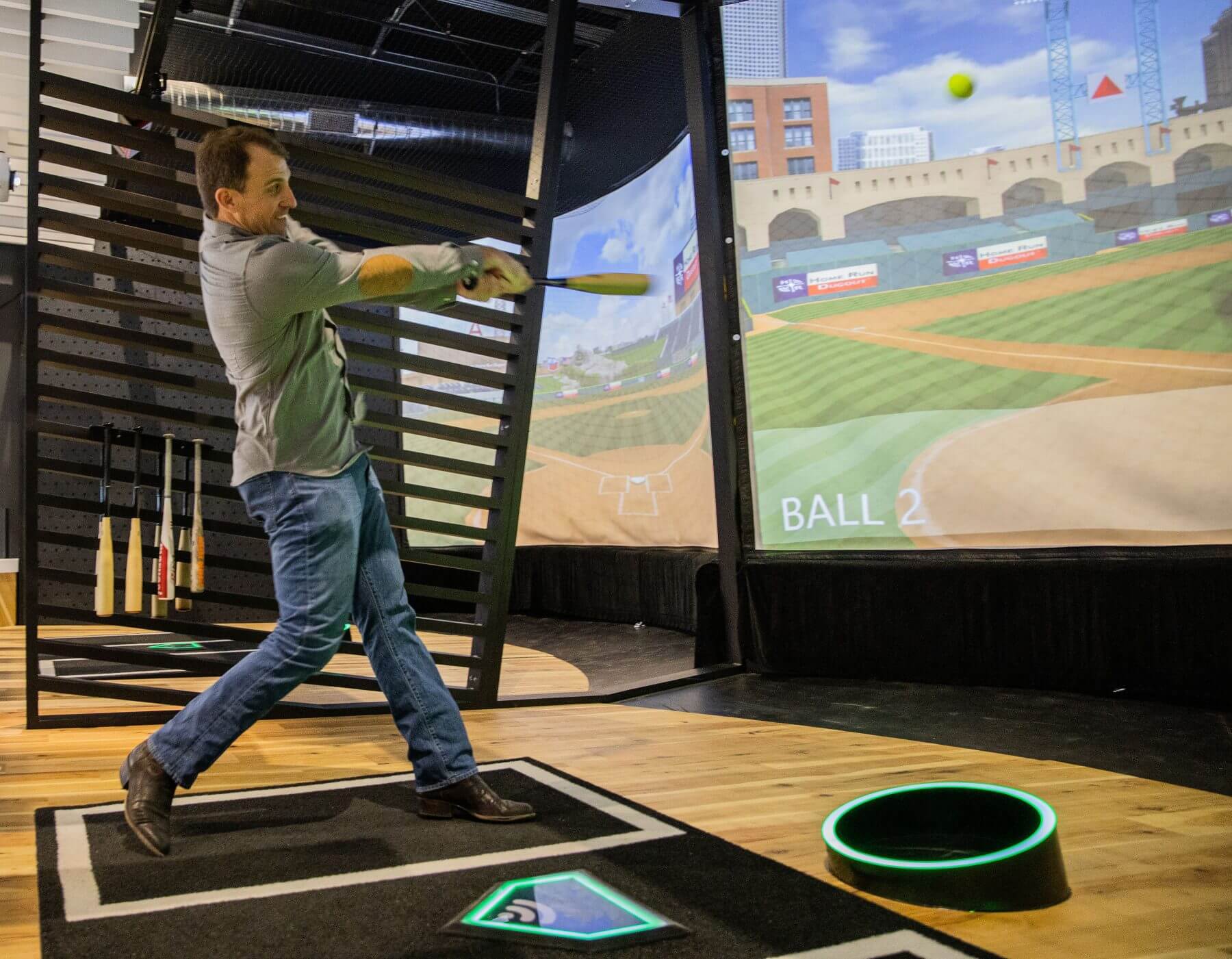A simulated baseball game is an informal practice session where players take live batting practice and fielding practice without playing a full regulation game. It allows players, especially pitchers returning from injury, to test their skills in a game-like setting. Simulated games take place at the stadium with batters stepping into the box to face live pitching. Fielders take their positions and react to batted balls. Coaches serve as umpires and call balls, strikes, and outs. The main purpose is to evaluate a player’s progress and prepare them for returning to full competition.
History
Simulated baseball games have existed for over 150 years. The first known simulated baseball game was created during the Civil War era, as early as the 1860s. These early baseball board games allowed fans to simulate gameplay by rolling dice and moving pieces around a physical board. While rudimentary, these games showed the appeal of recreating baseball virtually.
Modern simulated baseball games emerged in the 1920s and 1930s coinciding with the rise of tabletop baseball games. Games like Ethan Allen’s All-Star Baseball allowed users to simulate full seasons and statistics using dice rolls and probability charts. The creation of computer-based baseball simulations emerged in the 1950s and 1960s, though early computer limitations meant these games were text-based. With advances in computer graphics and processing power, more advanced simulated baseball video games appeared in the 1970s and beyond.
Today’s simulated baseball games feature sophisticated graphics and AI that accurately recreate the experience of managing a baseball franchise or playing the sport virtually. Though the medium has changed, simulated baseball games continue to allow fans to engage with the sport they love.
Gameplay

Simulated baseball games aim to recreate the experience of a real baseball game, with players swinging bats, throwing pitches, and fielding balls, but without needing the full contingent of players. The games allow individual players like pitchers coming back from injury to test themselves in game situations, while protecting them from full gameplay intensity.
Gameplay proceeds similar to a real game, with batters swinging and trying to make contact. Fielders take their positions and react to balls in play. Pitchers throw full-effort pitches from the mound to home plate. Umpires call balls, strikes, and outs. The difference is the game unfolds in a controlled environment, not a stadium filled with fans. Coaches and trainers closely monitor the players, particularly pitchers, ensuring they don’t overexert themselves. The gameplay intensity gradually increases to prepare players for full competition.
Statistics
Simulated baseball games generate a wide range of player and team statistics to mimic real MLB games. The game engines use complex algorithms and statistical modeling to produce realistic box scores and stats.
Player attributes like hitting ability, pitching skills, fielding range, arm strength etc. are encoded into the game. The simulator runs thousands of matchups between batters and pitchers to determine outcomes, factoring in game situations like score, inning, count etc. The results produce comprehensive player stats like batting average, home runs, RBIs as well as advanced metrics like WAR, OPS+ and FIP.
The simulators track team stats like runs scored, home runs, team ERA, and fielding percentage. Rosters and lineups can be customized, so fans can see how their favorite team’s statistics might change with trades, callups or lineup tweaks. Overall, the statistical engine aims to produce realistic and nuanced team and player statistics that reflect actual on-field performance.
Strategy

In simulated baseball games, players take on the role of a baseball team general manager and are tasked with making strategic roster decisions to build a winning team.
Some key strategic choices include:
-
Managing the starting lineup – determining which players to start each game to optimize run production, defense, pitching matchups, etc. Gamers need to consider platooning batters and pitching rotations.
-
Making trades – trading players with other teams in the league to acquire needed positions or improve team strengths while giving up excess assets. This requires valuing players appropriately.
-
Signing free agents – determining which available free agent players to sign each season to fill gaps or provide upgrades for the team. Need to balance salary demands.
-
Setting defensive positioning – choosing strategic shifts and positioning for certain batters or game situations. This can minimize scoring chances. (Game Simulations Answer Baseball’s What-Ifs)
-
Developing prospects – deciding which minor league prospects to call up and when to integrate them into the lineup. Balancing their development with winning now.
-
Managing the roster – options like waivers, disabled list, calling up and sending down players between majors and minors. Maximizing roster composition.
-
In-game decisions – pinch hitting, bunting, steals, situational relief pitching, etc. Optimizing in-game tactical choices.
The strategic decisions in simulated baseball aim to build the best team possible within the rules and constraints of the game. It tests a gamer’s ability to evaluate talent, manage a roster, and make the right moves at the right time.
Leagues & Tournaments
Simulated baseball leagues and tournaments allow fans to experience the strategy and competition of baseball through online simulation games.
Some popular options include:
-
SimLeague Baseball – This free simulation from WhatIfSports lets you manage historical or custom teams in a variety of league setups. You can compete against other GMs in leagues, tournaments, and more.
-
Pennant Chase – Pennant Chase offers free fantasy GM leagues where you draft, manage, and simulate full seasons. The simulation engine uses advanced AI and stats. There are both historical and fictional leagues to choose from.
-
Dynasty League Baseball – One of the most sophisticated and customizable baseball sims, DLB lets you replay any season in MLB history. Stats and strategy are realistically modeled. There are both solo and online multiplayer leagues.
These sim leagues allow armchair GMs and fans to experience the full managerial challenge of crafting rosters, developing prospects, managing lineups and rotations, executing trades and signings, and more. The depth of strategy keeps many simulated baseball enthusiasts coming back year after year.
Top Games

Some of the top and most popular simulated baseball game franchises over the years include:
-
Out of the Park Baseball: This series by Out of the Park Developments has been around since 1999 and is considered one of the most in-depth and realistic baseball sims. The latest version, Out of the Park Baseball 23, includes real MLB rosters and allows players to control every aspect of running a baseball franchise from drafting and managing to finances.
-
Strat-O-Matic: First created in 1961, Strat-O-Matic is one of the original tabletop baseball simulations. It uses player cards with various results that get crossed off as games are played with dice rolls. It remains popular for its simplicity and extensive historical seasons available.
-
APBA Baseball: Similar to Strat-O-Matic, APBA Baseball also uses player cards and dice rolls to simulate games and seasons. It was created in 1951 and has many diehard fans to this day. The game features rich graphics on its cards and deep statistical accuracy.
-
MLB The Show: While not a management sim, the MLB The Show series allows you to play out full baseball seasons and franchises as if managing a real MLB team. With official licensing and TV-style presentation, The Show provides an immersive and realistic on-field experience.
-
Baseball Mogul: This PC series has been published since 1997 and places you in the role of GM. You control your team by trading players, managing minor leagues, setting lineups, negotiating contracts and more in order to build a dynasty.
-
Perfect Inning: A popular mobile baseball sim game, Perfect Inning uses official MLB licenses and teams for a lightweight yet fun management experience. Manage your franchise by acquiring players, setting lineups and winning championships.
The abundance of quality simulated baseball games shows the appeal of getting to control the front office or field of your favorite MLB organization. With options across platforms ranging from simple to extremely detailed, there’s a baseball sim for every type of armchair GM.
In Pop Culture
Simulated baseball games have become ingrained in pop culture over the years, appearing in various movies, TV shows, books, and more.
Some of the most well-known examples include:
-
In the 1989 film Field of Dreams, Kevin Costner’s character plays tabletop baseball simulation games like APBA Baseball against his deceased father. The games represent their bond and shared love of baseball.
-
The book and film Moneyball showcase baseball simulations like Strat-O-Matic that help teams make data-driven roster decisions.
-
In a famous episode of The Simpsons called “Homer at the Bat,” Mr. Burns forms a company softball team by recruiting Major League Baseball stars. The episode pokes fun at baseball simulation stats and strategy.
-
Many TV shows feature characters playing baseball video games as a fun hobby and part of bonding, including The Goldbergs, Everybody Hates Chris, How I Met Your Mother, and more. Popular real-life game franchises portrayed include MLB The Show, MVP Baseball, and R.B.I. Baseball.
-
The board game Stratomatic Baseball and its electronic versions have appeared across pop culture for over 60 years, from movies like The Bad News Bears to TV shows like The Big Bang Theory.
Overall, simulated baseball has become ingrained in American culture, allowing fans to enjoy the sport through games that evoke nostalgia and bring people together through a shared pastime.
Benefits

Simulated baseball games provide many benefits that appeal to a wide range of players. One of the main draws is the ability to control all aspects of the game and simulate any baseball scenario imaginable. Players can set lineups, call the shots, and shape the game however they want. This allows for experimentation and creativity beyond what is possible in a typical baseball video game.
Many enjoy the deep strategic elements of running a simulated team. The games provide an outlet for armchair GMs and managers to test their skills in trades, roster construction, lineup optimization, and in-game strategy (Sabr). There is great satisfaction in building a dynasty through shrewd management.
For hardcore baseball fans, the realism and statistical accuracy of the simulations is a major plus. The games incorporate real MLB players and teams with true-to-life attributes and tendencies. Stats aficionados appreciate being able to replicated an entire MLB season or rewrite history. The numbers align closely with actual on-field results.
Lastly, simulated baseball provides a low-cost, low-risk way to enjoy America’s pastime. There’s appeal in getting into the dugout without the physical demands of actual baseball. Sim games are an engaging hobby that let armchair fans be an owner, GM, manager, and players all in one.
The Future
Simulated baseball games are poised to evolve rapidly in the coming years as new technologies emerge. Virtual reality (VR) and augmented reality (AR) are areas that could drastically change the simulated baseball experience. Major League Baseball has already experimented with VR games that allow fans to feel like they are actually at the ballpark. These immersive simulations could become even more lifelike and intricate.
Advanced artificial intelligence may also lead to more realistic opponent AI and simulated players that behave just like real athletes. Machine learning techniques could analyze vast amounts of baseball data to recreate players and teams with authentic strategies and tendencies. Cloud-based gaming could allow for massive online simulated leagues with thousands of human managers competing against each other. As consumer hardware improves, features like haptic feedback could heighten the physical sensations of simulated gameplay.
New console and mobile capabilities may provide players robust baseball simulations on the go. Integrations with fitness devices or motion tracking could also make the experience more active and engaging. As technology progresses, simulated baseball games have tremendous potential to become incredibly realistic, social and accessible. The future is bright for fans of digital baseball.








